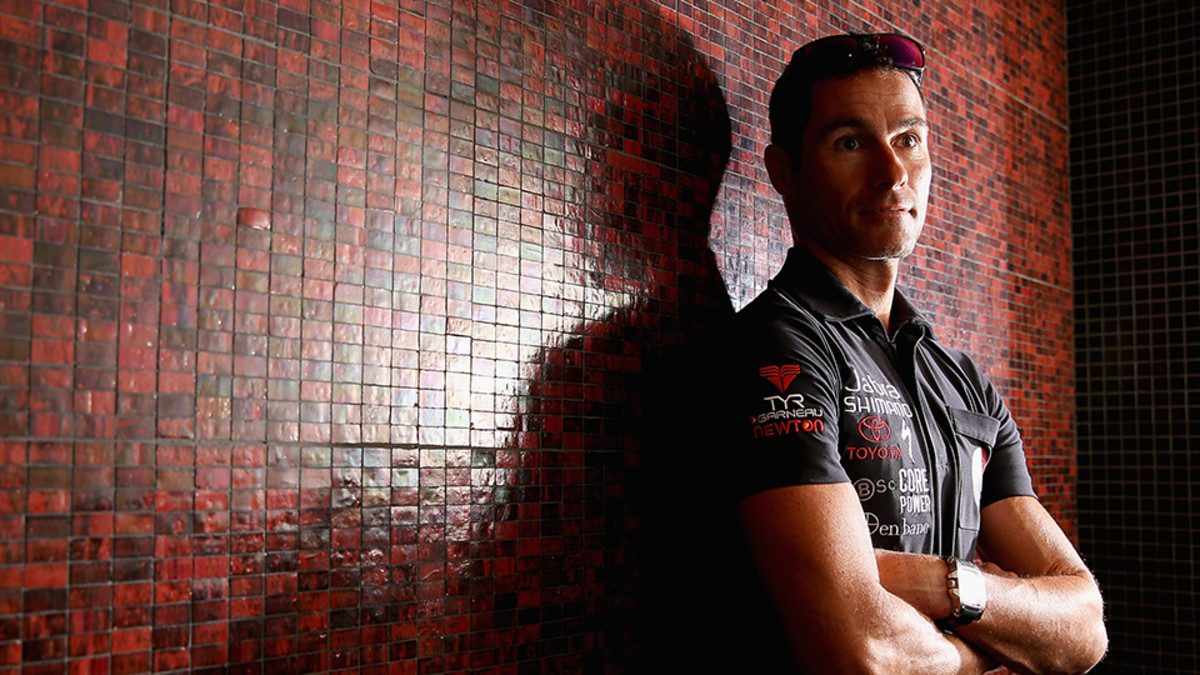
Ironman Craig Alexander returns from retirement with revamped routine
Three time Ironman World Champion and two-time Ironman 70.3 World Champion Craig “Crowie” Alexander announced his retirement from Ironman distance triathlons in March 2014. But less than six months later, the 41-year-old is back on a strict training regimen, sticking to his nutrition plan and preparing for his return at the IRONMAN World Championships in Kona, Hawaii, on October 11. So what’s with the false alarm retirement and fierce comeback?
As he crossed the finish line of the Asia-Pacific Championships in March, Alexander said he wanted to devote more time to his family and live full-time in Australia. He felt his body needed a break from the race's punishing workouts and long miles. But when his second child, Austin, didn't start school, he knew he could go to Boulder, Colorado, and have a substantial amount of training time.
Behind the Body: Pro triathlete Terenzo Bozzone
With another world champion title at stake and a back injury still nagging, Alexander's training, nutrition and recovery plans have become even more vital. But instead of the sport’s typical high volume and high intensity workouts, the 5-foot-9, 150-pound triathlete has overhauled his methods and is rethinking his approach to this year's World championships. One primary focus is recovery, to help recuperate his “aging body” after demanding workouts.
Immediately following a work out, Alexander drinks a protein shake to start replenishing his tired muscles with nutrients and amino acids.
"If it's a really long run—like 22 miles or so—I'll probably have an ice bath straight after that to minimize the muscle damage and bring my body temperature down," says the New South Wales, Australia, native. "Lately I've been also been using compression tights and boots to flush out my legs, and I get two massages a week and dry needling to help me recover."
To monitor his back problems, Alexander also sees a chiropractor once a week to help minimize any pain. But when he's not in the doctor's office, he incorporates specific stretches to aid in muscle recovery and performance. Alexander focuses on isolating areas where he has issues with strength and flexibility, such as the hip flexor or glute muscles, and then brings in other connected muscle groups.
"I assume that split leg lunge position, and then with your leg behind, you can grab the ankles and bring it up so you can work the quad in as well. Then you can twist your arm over and extend that stretch right up the side,” Alexander says of a typical stretching routine.
Because of the benefits he has seen from his own flexibility training, Alexander has also recently added yoga into his conditioning. Like his stretches, the yoga poses focus on core strength and use body weight to strengthen the muscles.
"Yoga takes the muscles through range, just like when you're out running or cycling and you're loading the muscle and expecting it to lengthen," Alexander says. "So I like yoga because the way you load the muscles and then stretch them is more functional than just a static stretch."
While Alexander knows these exercises help him to bounce back, he says the foundation of recovery starts with the essentials: sleeping and eating. After 20 years in the sport, he knows which foods best fuel his body, but he also understands he must be willing to compromise in less-than-ideal situations and can occasionally splurge on favorites, like an Australian version of Cadbury’s Dairy Milk.
“I’m vigilant but I also believe in having an eating plan that is sustainable. You need to be flexible when you’re at airports and traveling in different countries,” says Alexander, who has seen the negative effects of super-strict diets on his friends. “Everything in moderation. I treat myself if I’m out to dinner and if I want a glass of wine or beer, or an ice cream, I’ll do it.”
When it comes to pre-training energy, Alexander turns to an unorthodox form of fuel: coffee. Some dismiss the caffeinated beverage as dehydrating, but Alexander says coffee is especially important for endurance athletes who are training their bodies to burn fat as fuel, also known as glycogen sparing. During training, Alexander will have a cup of coffee—and nothing else—right before a two-hour run to help jump-start the process. He says at first, the body will have an unfavorable reaction (like moderate dizziness or shakiness), but the caffeine in the coffee will mobilize the fatty acids and the body will adjust to burning fat as fuel.
“Endurance runners need to train their bodies to work off fat because your body can only store enough carbs for two hours, and our races are much longer,” he says. “Once you apply that stimulus again and again, the body is directed to use what is available and by the fourth week, you get to the end of that two-hour run feeling strong.”
Despite his remarkable level of fitness, Alexander is a lot like the average athlete.
He motivates himself through the hours of running or cycling by listening to music—usually 1980s rock and pop tunes, mixed with some of his nine-year-old daughter’s Taylor Swift and Carly Rae Jepsen tunes. With family always on his mind, he says he’s fairly sure October 11 will be his last race in Kona, despite his faux-retirement earlier in the year.
“I never stopped loving it,” Alexander says. “But I’m turning 42 next year and I’ve had a good run. So that’s the plan.”






